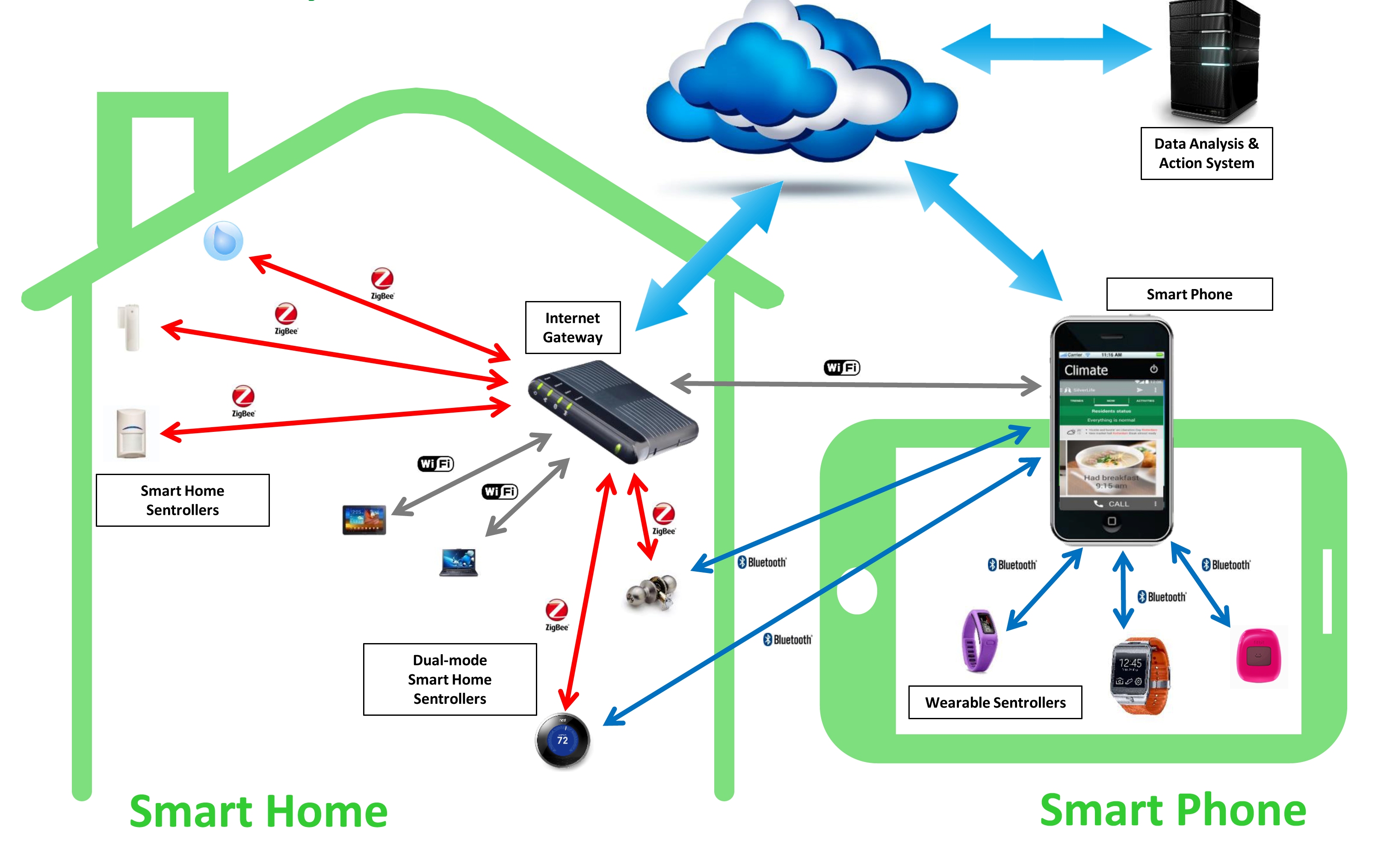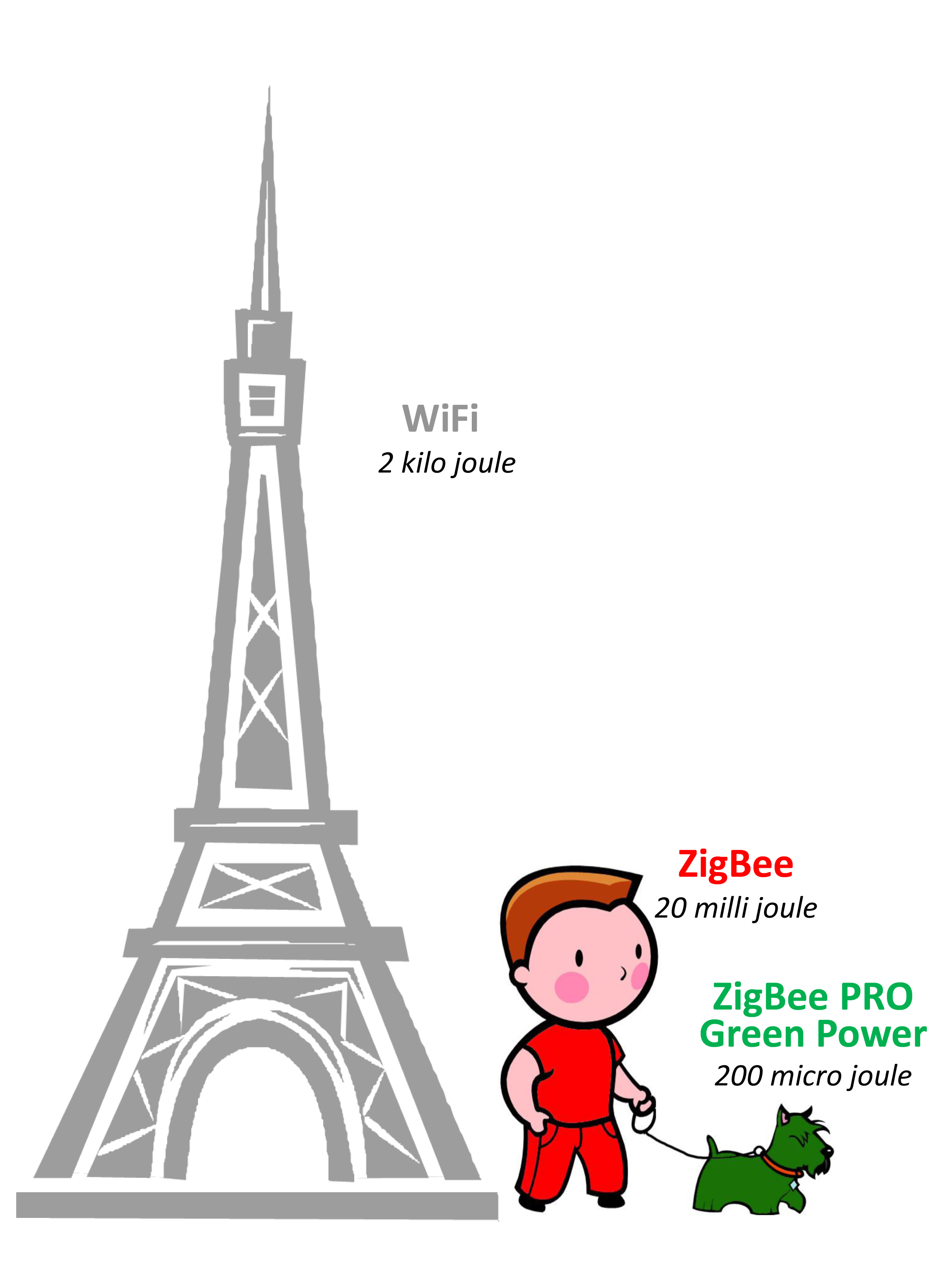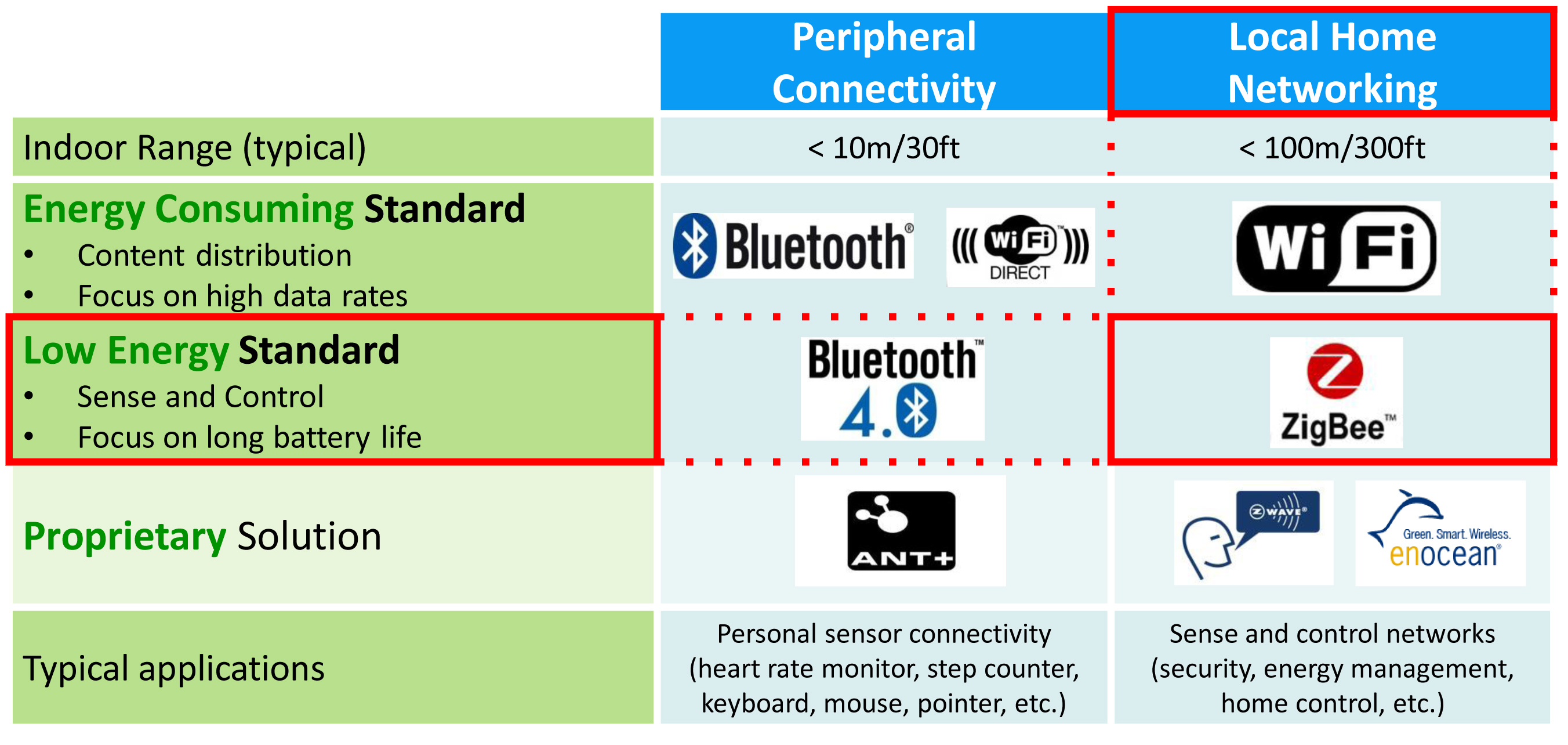What SmartHome device developers need to know
Hundreds of millions, dozens of billions? The estimates of how many connected devices will constitute the Smart Home market are all over the map. The only agreement is that this sector is going to be big and will be extremely important to the future of the electronics industry.
By Cees Links, CEO of GreenPeak.
What is a Smart Home?
For this discussion, let’s define the Smart Home as being a network of Sentrollers – sensors, controllers and actuators, connected to a central home control box and from there, to an intelligent dashboard in the cloud that can be monitored and controlled by web connected devices like smart phones.
Currently there are about 600m connected homes in the world – connected homes have some kind of internet connection. Of these, on the average, each has about ten connected WiFi devices. This includes computers, laptops, phones, games, entertainment systems, etc. By 2020, we expect to see the number of connected homes grow to 700m.
This will include a network of different kinds of sensors spread throughout the home – temperature, motion, position, security, humidity, etc., that can track the life activity of those in the home. This includes position sensors for measuring whether a door or window is open or closed, motion sensors that track where in the house a certain occupant may be, temperature sensors to ensure that the house is at the proper temperature, while at the same time ensuring optimal use of energy (i.e. not heating or cooling the house when nobody is home. This can also include humidity sensors adjacent to plumbing fixtures to provide alerts in case of leaks.

Intelligence can enable many of these sensors to provide dual uses, i.e. when no one is in the home and the security system is on, a motion sensors can send an alarm, if it detects someone moving around. However, when the residents are home, the motion sensors can turn on lights to illuminate a path during the night or customise temperature for the room in which the person is in. The motion sensor could even activate the appropriate music selections to follow the person as they move from room to room.
Depending on their function, these sensors can communicate among themselves and to a central home control unit, which connects all the home’s systems to the internet and allows control and monitoring of the home via cloud intelligence, smart phones, tablets or other web connected devices.
Within the homes however, the devices need to talk to each other and to the central home router/network. There are a variety of wireless technology standards that can be used to tie together these sentrollers and make sure that they can reach the home control box (i.e. the router).
We believe that there will be three open standard based networks within the home. For example, WiFi – with its wide bandwidth (and power hungry) requirements, will be used for big data applications, like video streaming, music, phones, gaming, etc. In contrast, Bluetooth will be used for short range communications between low data rate devices like wearables and medical health (heart rate monitoring, fitness band). However, for most sensor applications in the home, IEEE 802.15.4 based protocols like ZigBee (or in the future Thread) will be the most suitable.
Operating in the 2.4GHz frequency range, able to transmit through walls, floors and furniture, and cover an entire house, IEEE 802.15.4 based wireless offers an ideal convergence of robustness, bandwidth, power requirement and cost.
Designers can essentially consider ZigBee as low data rate, low power WiFi. Most consumers have grown accustomed to charging their portable WiFi devices every day or so. In contrast, no one will want to regularly change batteries on the hundred or so sensor devices in the Smart Home of the future. ZigBee offers the ability for a battery powered device to run for up to ten years without having to change or recharge the battery. Because ZigBee only needs to send small data packets on an occasional basis, it does not require the power used by WiFi which continually transmits millions of data packets.

Designed for high data rate applications, WiFi requires 100,000 times more power than ZigBee and 10,000,000 times more power than ZigBee PRO Green Power, which is designed for energy harvesting uses (no batteries – no AC power).
ZigBee offers various other advantages to the device developer. As an international standard, it enables design engineers the knowledge that their device can be used anywhere in the world, unlike some other non-standard wireless solutions like Zwave and EnOcean. Also, as it is an open international networking standard, there are many different companies offering ZigBee radio chips – this enables manufacturers to multisource the radio chips, not locking them into a single provider.
Additional ZigBee technical features include:
- Global operation in the 2.4GHz frequency band according to IEEE 802.15.4;
- Regional operation in the 915Mhz (Americas) and 868Mhz (Europe);
- Frequency agile solution operating over 16 channels in the 2.4GHz frequency;
- Incorporates power saving mechanisms for all device classes, plus support for battery-less devices;
- Discovery mechanism with full application confirmation;
- Pairing mechanism with full application confirmation;
- Multiple star topology and inter-Personal Area Network (PAN) communication;
- Various transmission options including broadcast;
- Security key generation mechanism;
- Utilises the industry standard AES-128 security scheme; and
- Supports Alliance standards or manufacturer specific innovations.

The new Smart Home – the Intelligent smart home – will be composed of a network of sensors, actuators and controllers – all connected by a reliable, robust and power efficient wireless connectivity standard, provides a path to the next-gen, multi trillion dollar electronic component and smart home devices market.
Author bio: Cees Links is the founder and CEO of GreenPeak. Under his responsibility, the first WLANs were developed, ultimately becoming household technology integrated into PCs and notebooks. He also pioneered the development of access points, home networking routers and hotspot basestations. He was involved in the establishment of the IEEE 802.11 standardisation committee and the WiFi Alliance. And, he was instrumental in establishing the IEEE 802.15 standardisation committee to become the basis for the ZigBee sense and control networking.










